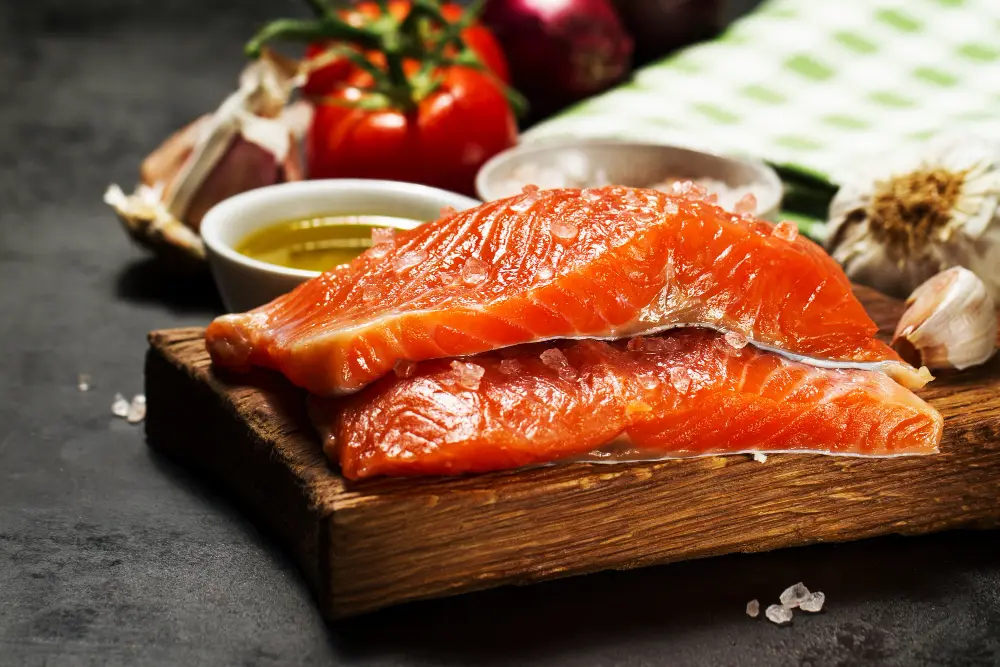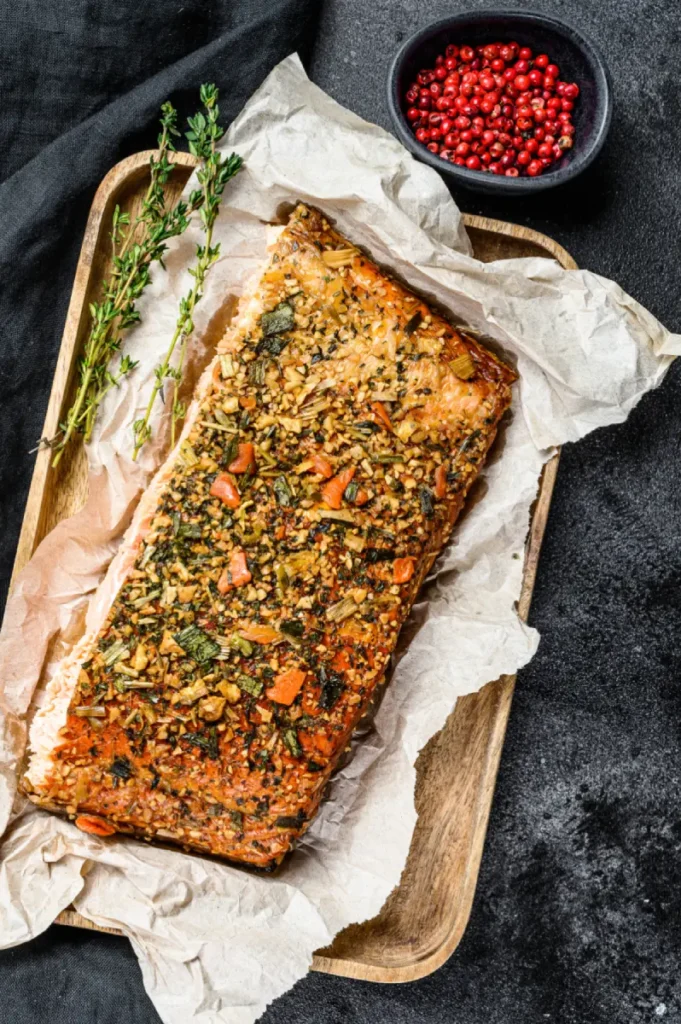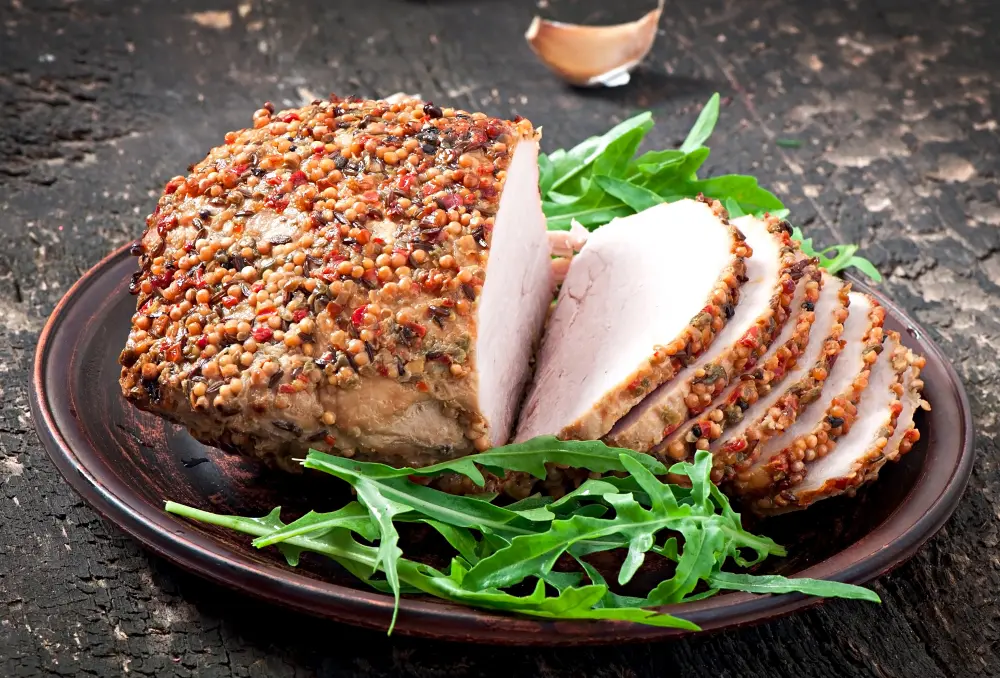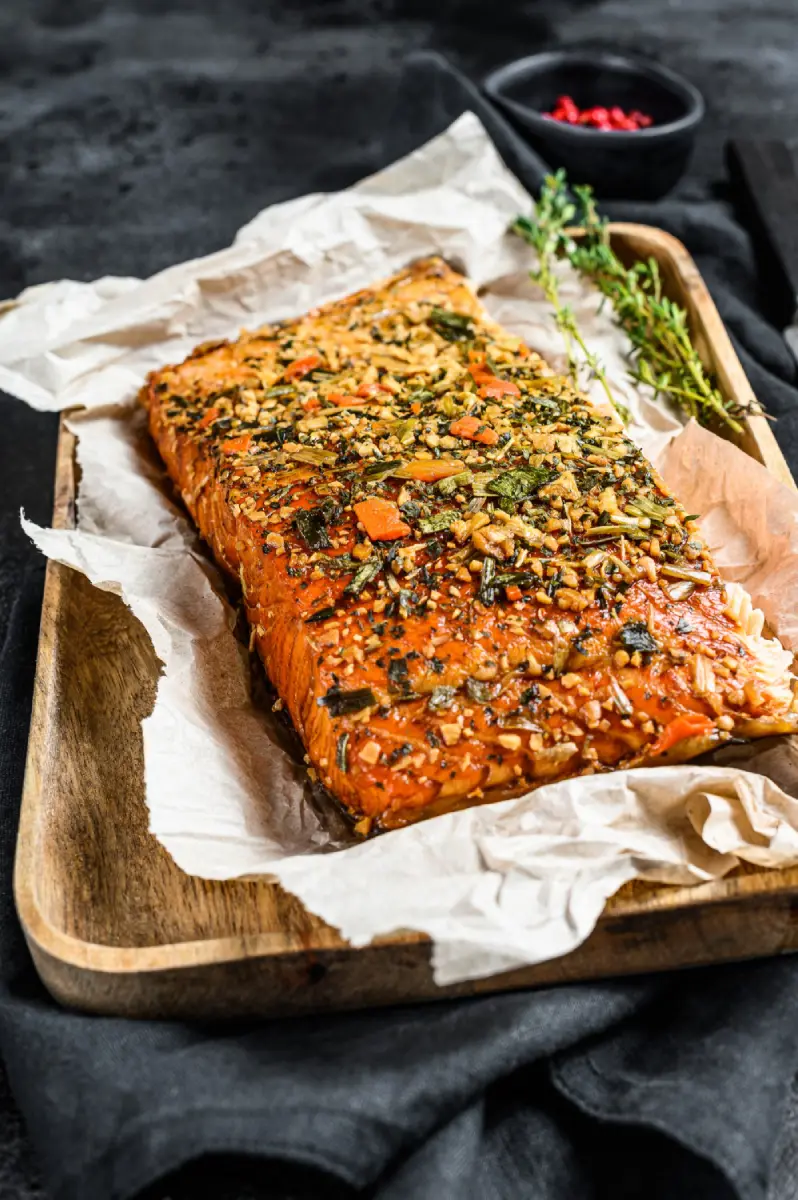Salmon loaf, a classic dish that’s both nutritious and delicious, offers a delightful twist to your mealtime routine. This versatile recipe not only caters to the taste buds of seafood lovers but also packs a punch of omega-3 fatty acids, making it a heart-healthy choice for the whole family. Whether you’re a seasoned chef or a kitchen newbie, this comprehensive guide will walk you through creating the perfect salmon loaf, from selecting the right ingredients to serving it up with style. So, let’s dive in and explore the wonders of this seafood sensation, ensuring your culinary journey is as smooth as the texture of a well-made salmon loaf.
Part 1: Ingredients List
Key Ingredients for Salmon Loaf
The foundation of a mouthwatering salmon loaf lies in its simplicity. At its core, you’ll need:
- 1 (14.75 ounce) can of salmon, undrained for that rich, oceanic flavor
- ½ cup of crushed saltine crackers or breadcrumbs, providing the perfect texture
- ½ cup of milk, to bind all the ingredients together smoothly
- 1 large egg, beaten, acting as the glue for your loaf
- 2 tablespoons of melted butter, for a touch of richness
Optional Ingredients for Added Flavor
To elevate your salmon loaf, consider these optional add-ins:
- Diced onions or scallions, for a hint of sharpness
- Chopped fresh dill or parsley, for a burst of freshness
- A squeeze of lemon juice, for that zesty kick
- Capers or chopped pickles, for a tangy twist
Preparation Guide
Step-by-Step Cooking Instructions
- Preheat your oven to 350°F (175°C), setting the stage for baking magic.
- In a large bowl, mix the salmon (don’t forget to flake it apart), crushed crackers or breadcrumbs, milk, egg, and melted butter. Stir until well combined.
- If you’re feeling adventurous, fold in any of the optional ingredients now, mixing them thoroughly into the base.
- Grease a 9×5-inch loaf pan and gently press the salmon mixture into it, smoothing the top with a spatula.
- Bake in the preheated oven for 45 minutes, or until the loaf is firm to the touch and golden brown on top.
Tips for Making the Perfect Salmon Loaf
- Moisture is key: Ensure your mixture isn’t too dry; the milk and egg should make it just moist enough to hold together without being soggy.
- Flavor it up: Don’t shy away from adding herbs and spices. Salmon loves dill, parsley, and even a bit of garlic powder.
- Let it rest: After baking, give your salmon loaf a few minutes to rest in the pan before slicing. This helps it set and makes for cleaner cuts.
Stay tuned for the next parts, where we’ll dive into the nutritional benefits, variations, serving suggestions, and more, ensuring your salmon loaf is not just a meal but an experience.
Incorporating insights from KitchenMorning’s ultimate guide to Chick-fil-A’s grilled chicken recipe, we can draw parallels in the importance of ingredient quality and preparation techniques. Similarly, the delicious boneless chicken wings recipes offer inspiration for creative sides that could perfectly complement your salmon loaf, enhancing the overall dining experience. For those interested in exploring dessert options to follow up the main course, KitchenMorning’s banana pudding ice cream guide provides a sweet ending to a delightful meal.

Nutritional Benefits of Salmon
Health Benefits of Salmon
Salmon is a powerhouse of nutrients, renowned for its high content of omega-3 fatty acids, which are essential for maintaining heart health and supporting brain function. Incorporating salmon into your diet can also aid in reducing inflammation and improving eye health. It’s a fantastic source of protein, vitamins B12 and D, selenium, and potassium, making salmon loaf not just a tasty dish but a nutritious choice for any meal.
Nutritional Breakdown of Salmon Loaf
A single serving of salmon loaf can offer a significant portion of your daily protein needs, along with healthy fats and a variety of vitamins and minerals. The addition of ingredients like eggs and milk only enhances its nutritional profile, providing calcium for bone health and additional protein. By choosing whole-grain breadcrumbs or crackers, you can also add a good dose of dietary fiber to your meal.
Variations of the Salmon Loaf Recipe
Adding Vegetables for a Healthier Twist
To make your salmon loaf even more nutritious, consider folding in finely chopped vegetables such as spinach, bell peppers, or zucchini. Not only do they add color and texture to your dish, but they also increase its vitamin, mineral, and fiber content.
Creative Spices and Herbs to Enhance Flavor
Don’t hesitate to experiment with various herbs and spices to find your perfect flavor combination. Dill and parsley are classic pairings, but thyme, oregano, or even a pinch of smoked paprika can add a delightful depth to your loaf. A dash of lemon zest can brighten the entire dish, offering a fresh contrast to the rich salmon.
Serving Suggestions

Best Side Dishes to Complement Salmon Loaf
A well-chosen side dish can turn your salmon loaf into a feast. Consider light and refreshing options like a crisp green salad, steamed asparagus, or a tangy coleslaw. For a heartier meal, roasted potatoes or a creamy mashed cauliflower pairs beautifully. Drawing inspiration from KitchenMorning’s cheesy smashed potatoes recipe, these sides can elevate your salmon loaf into a gourmet experience.
Presentation Tips for an Appealing Dish
First impressions count, so take a moment to garnish your salmon loaf before serving. A sprinkle of fresh herbs, a few lemon slices, or a drizzle of a simple dill sauce can elevate your presentation significantly. Serve it on a platter with your sides artfully arranged for a meal that looks as good as it tastes.
Storing and Reheating Tips
How to Store Leftovers
Salmon loaf keeps well in the refrigerator for up to three days when stored in an airtight container. You can also wrap it tightly and freeze it for longer storage. Thaw overnight in the refrigerator before reheating.
Best Practices for Reheating
To maintain the moisture and texture of your salmon loaf, reheat it in the oven at 350°F (175°C) until warmed through. Covering it with foil can help prevent it from drying out. Avoid microwaving if possible, as it can make the loaf rubbery.
Common Mistakes to Avoid
Overcooking the Salmon Loaf
One of the biggest mistakes is leaving your salmon loaf in the oven for too long, resulting in a dry, crumbly dish. Keep an eye on the clock, and don’t forget that it will continue to cook slightly after being removed from the oven.
Not Prepping Ingredients Properly
Ensure all ingredients, especially the salmon, are properly prepared before mixing. Flake the salmon thoroughly to avoid large chunks, and if you’re adding vegetables, chop them finely to ensure they cook evenly.

FAQs about Salmon Loaf
- Should salmon be baked covered or not?
- Is salmon loaf suitable for freezing? Yes, salmon loaf freezes beautifully. Wrap it tightly to prevent freezer burn.
- Can I make salmon loaf gluten-free? Easily, by substituting the breadcrumbs with a gluten-free alternative.
- How many cans of salmon do I need for a loaf of sandwiches?
- Can you freeze a salmon loaf?
- How many calories are in a salmon loaf?
Conclusion
Salmon loaf is a versatile, nutritious, and delicious dish that deserves a spot in your cooking repertoire. Whether you stick to the classic recipe or experiment with your own variations, it’s sure to become a mealtime favorite. Remember, the key to a perfect salmon loaf lies in the quality of ingredients, proper preparation, and a touch of creativity. Bon appétit!


1 thought on “Easy Salmon Loaf Recipe”